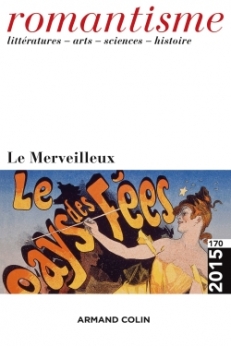
Romantisme n° 170 (4/2015)
Pour acheter ce numéro, contactez-nous
Recevez les numéros de l'année en cours et accédez à l'intégralité des articles en ligne.
Évoquer le « merveilleux chrétien » peut davantage faire penser à l’univers des légendes médiévales qu’à celui des apparitions et des miracles au sein d’une société en voie d’industrialisation. Le XIXe siècle catholique fut bien pourtant de diverses manières « un monde enchanté » où les signes du ciel sur la terre manifestent la proximité avec le monde céleste. Ce merveilleux plonge certes ses racines dans les traditions anciennes mais avec de profondes mutations, canalisées par un clergé qui tente d’épurer ces formes de religiosité en unifiant les particularismes locaux autour des grandes vagues dévotionnelles du siècle. Si la référence médiévale a pu construire l’imaginaire d’une chrétienté idéale, la piété du temps s’inscrit aussi dans la modernité de l’âge industriel tirant parti des chemins de fer comme de l’édition de masse qui contribue à forger un univers visuel associé aux dévotions nouvelles.
To evoke the merveilleux chrétien can call to mind the universe of medieval legends rather than the apparitions and miracles occurring within a society in the process of industrialising. The catholic 19th century was nonetheless in several ways “an enchanted world” where the signs of heaven on earth brought proof of the proximity of the heavenly world. This “merveilleux” certainly has its roots in ancient traditions, but with major mutations, canalised by a clergy attempting to purify these forms of religiosity by unifying local particularisms around the major devotional trends of the century. If the reference to medievalism was able to construct an imaginary but ideal Christianity, the devoutness of the times also partakes of the modernity of the industrial age by using both railways and mass publishing to forge a visual universe associated with the new forms of devotion.

